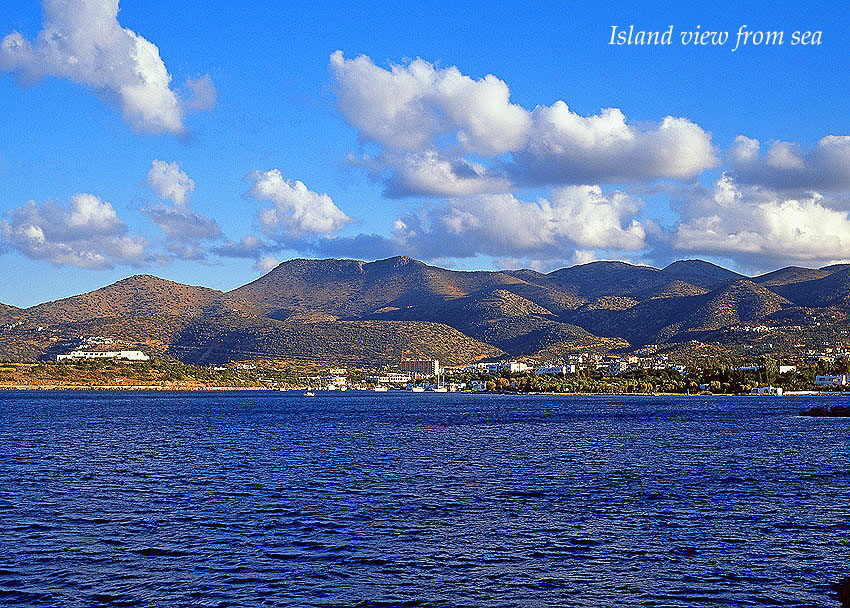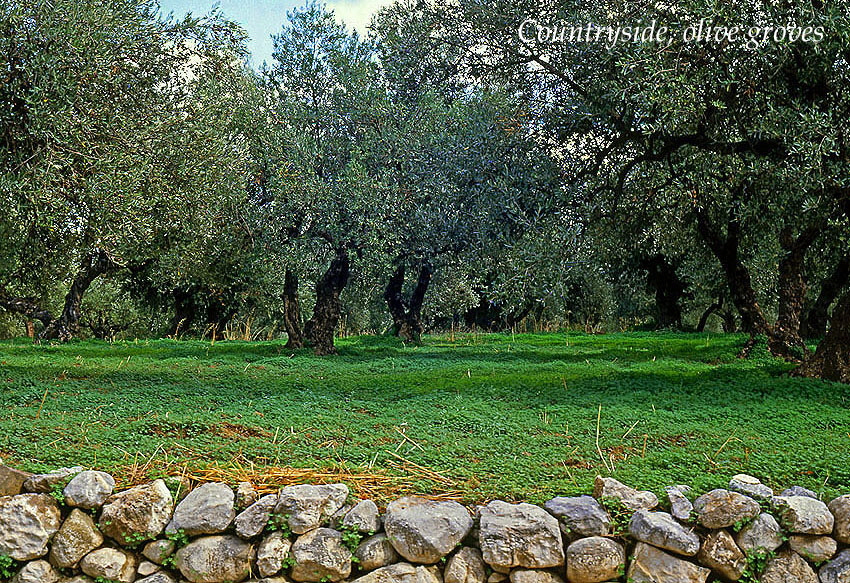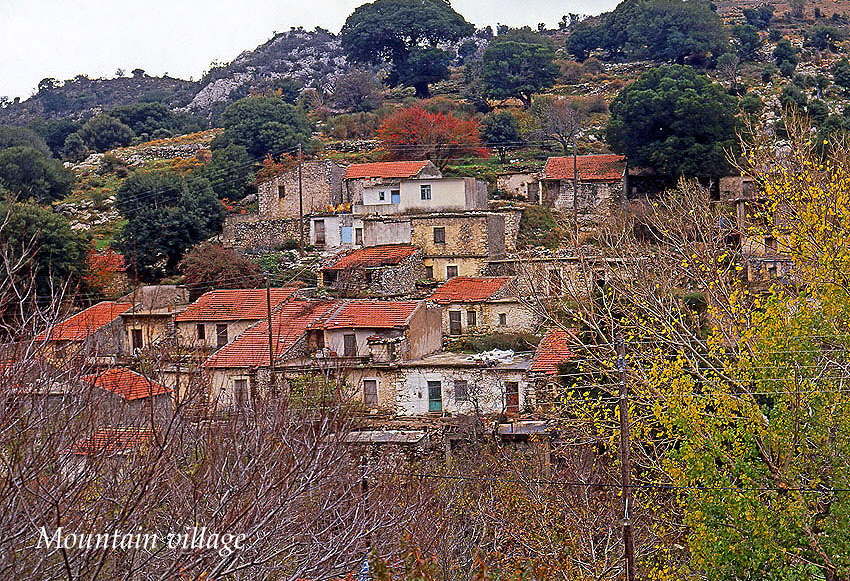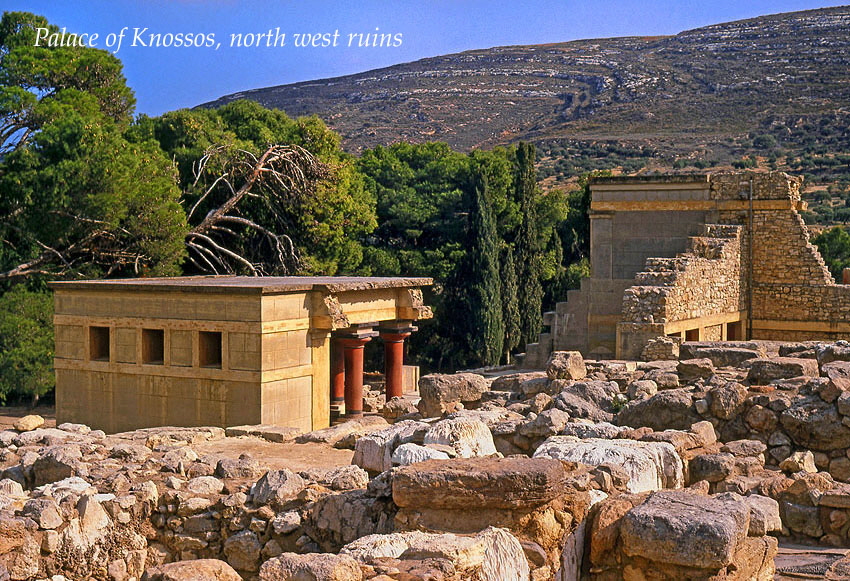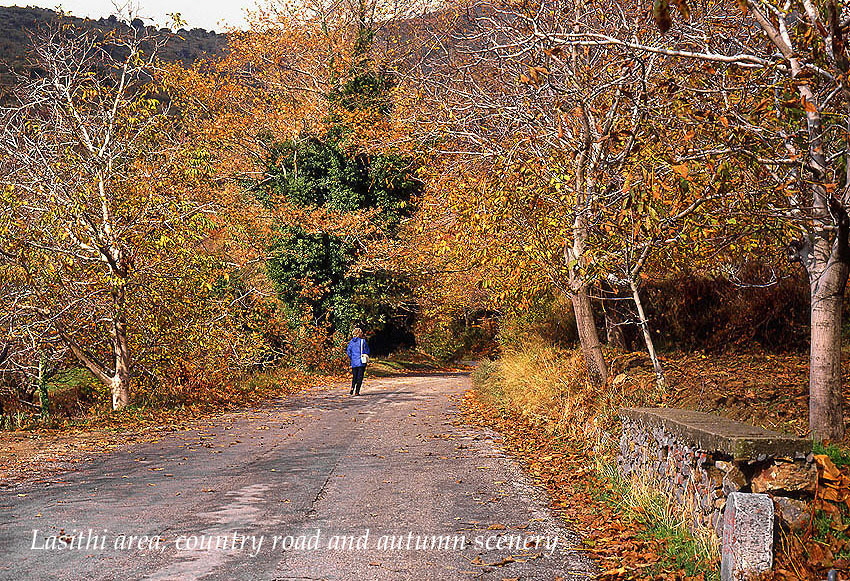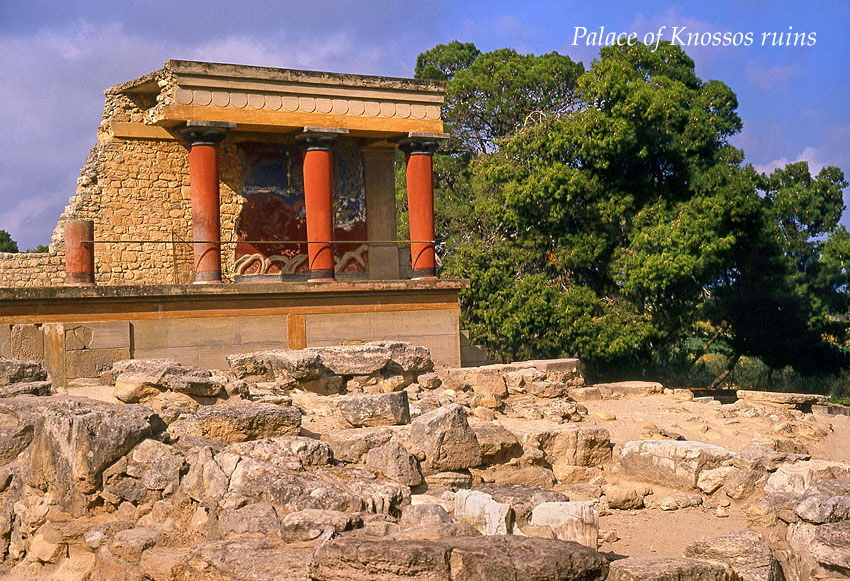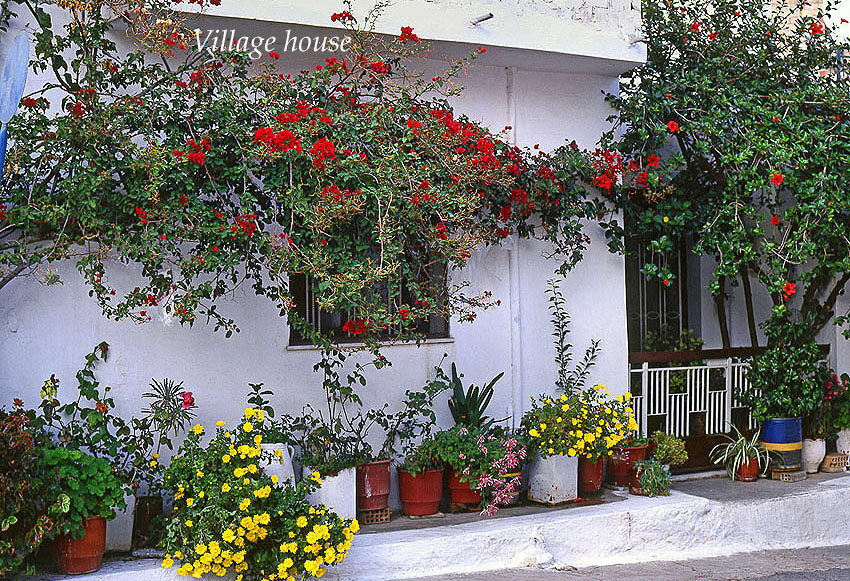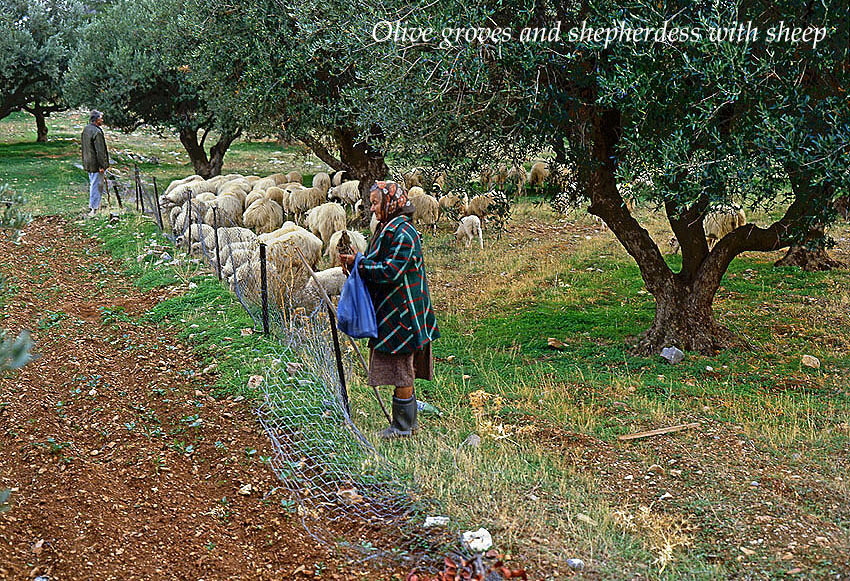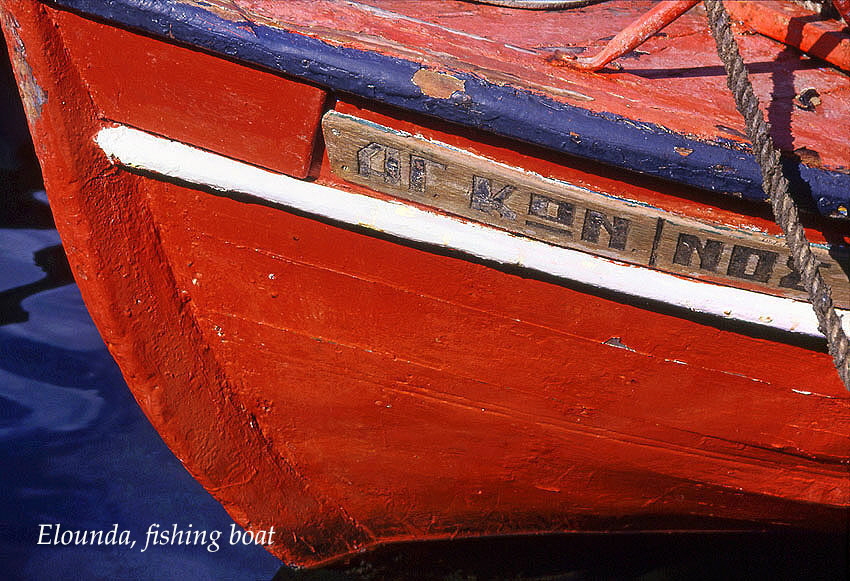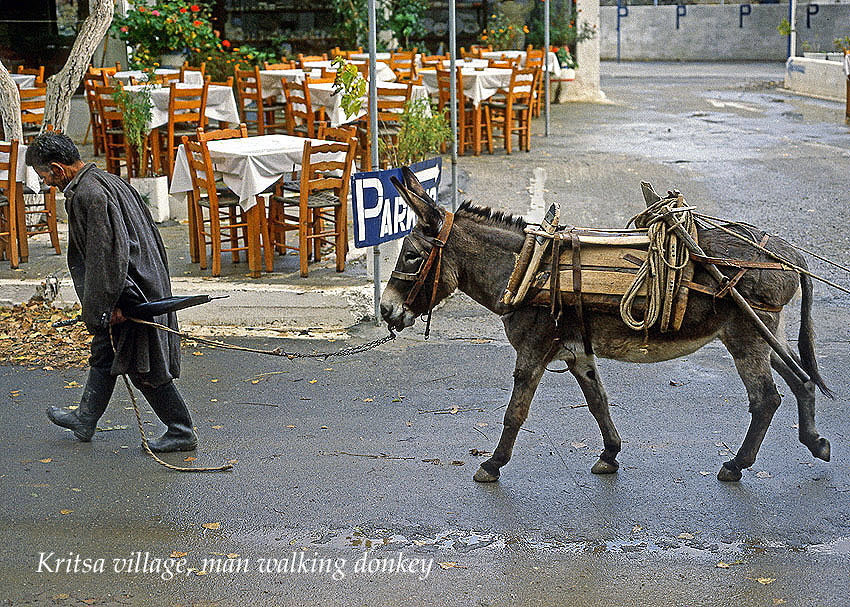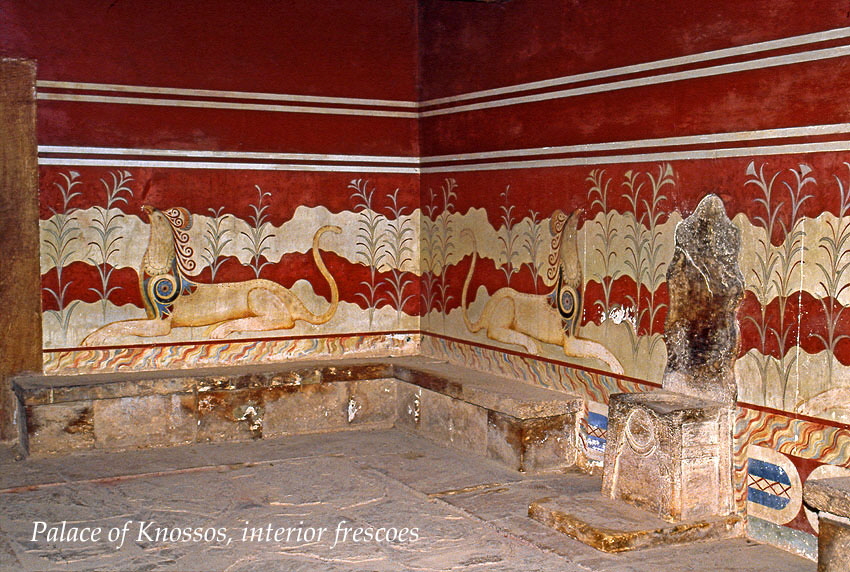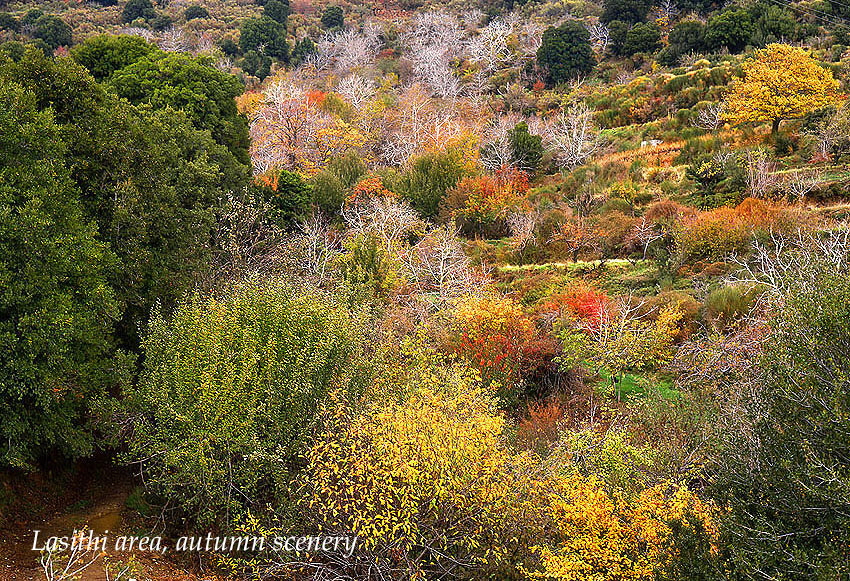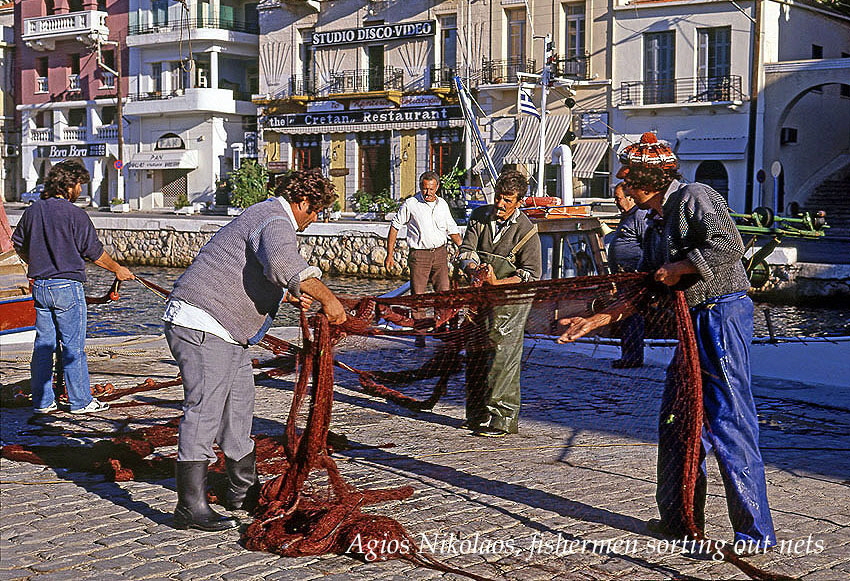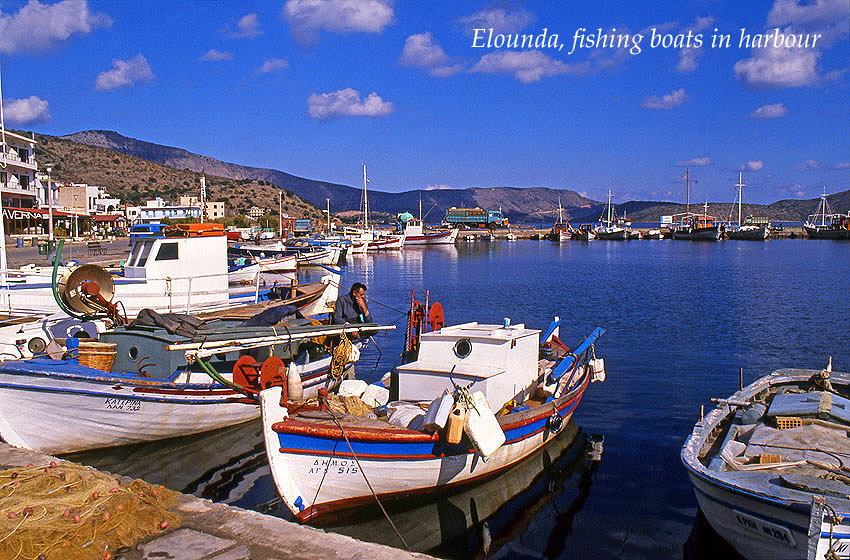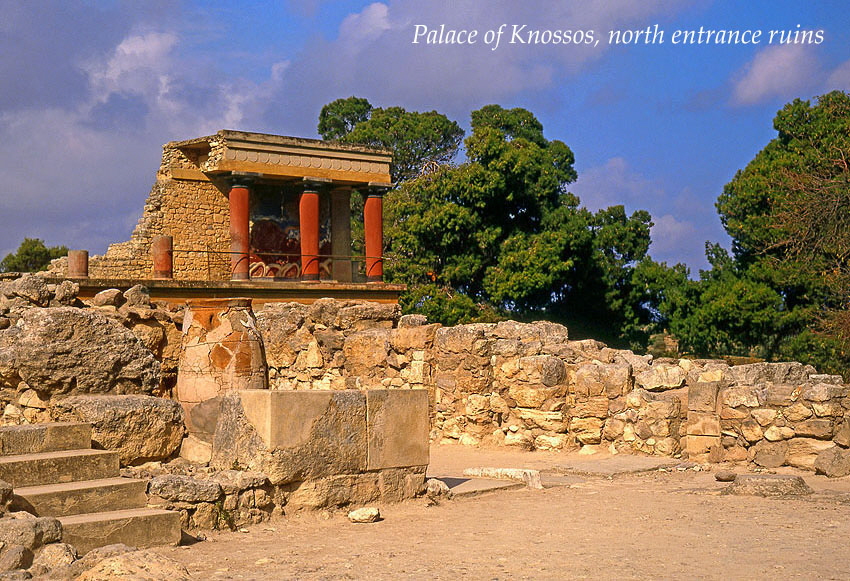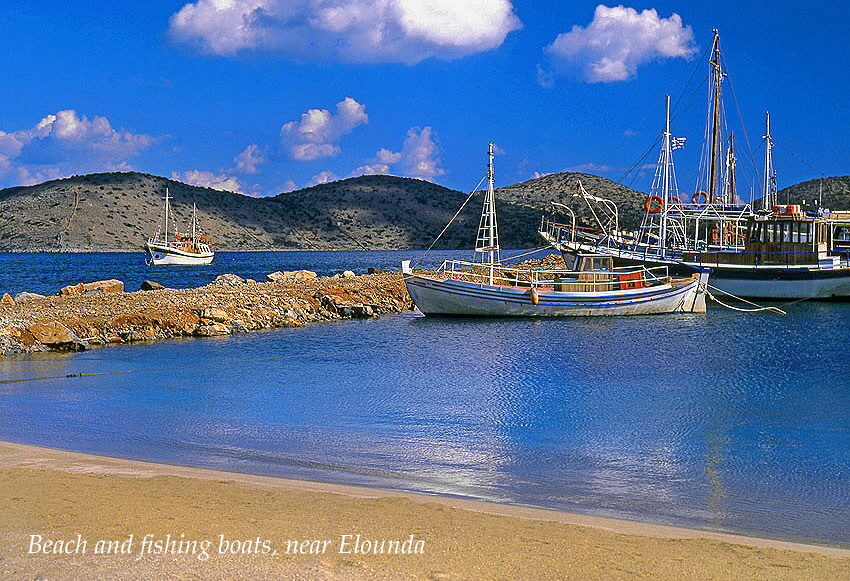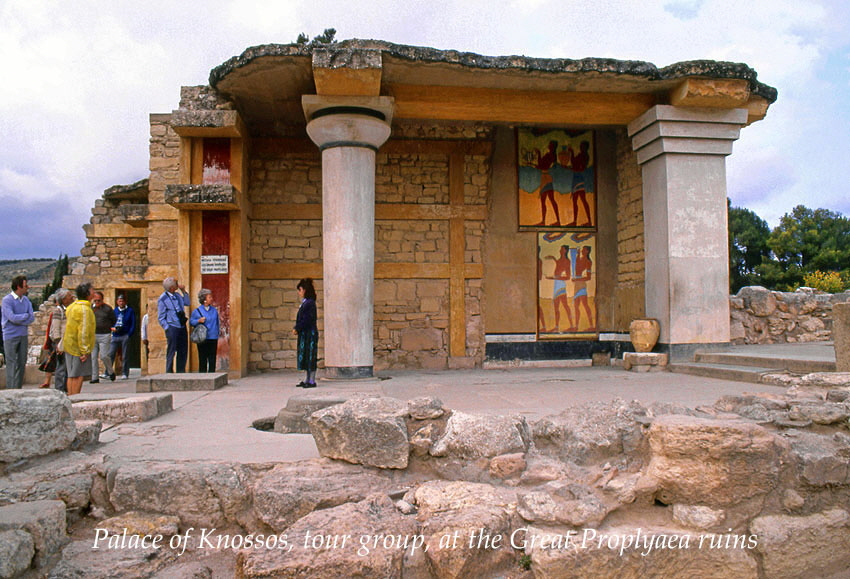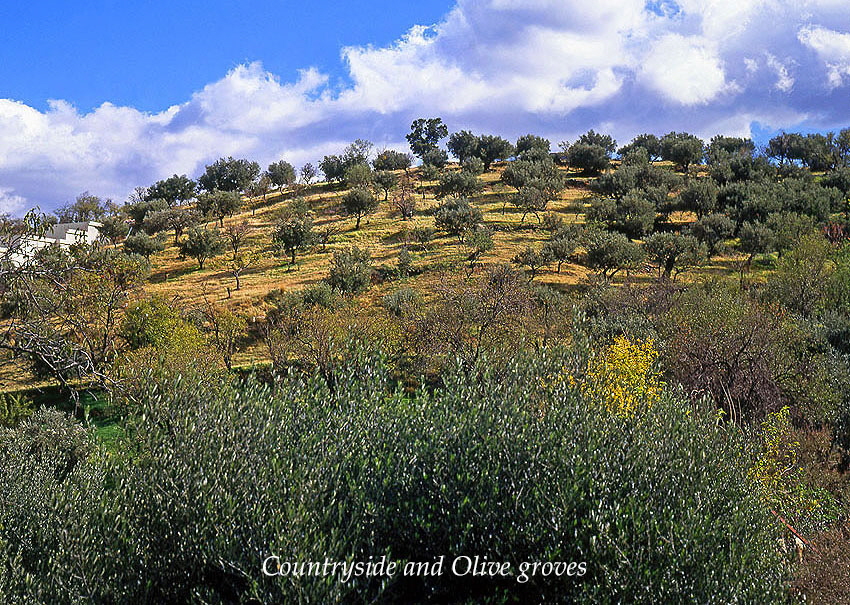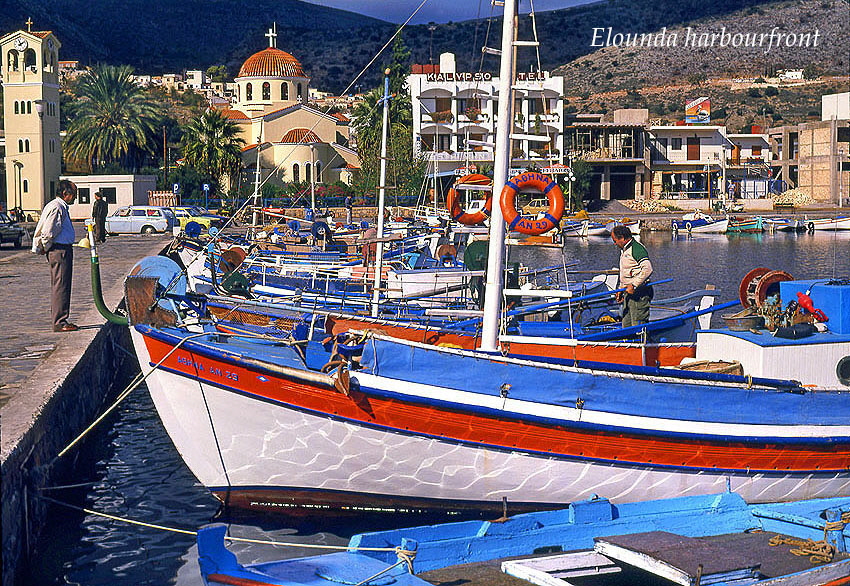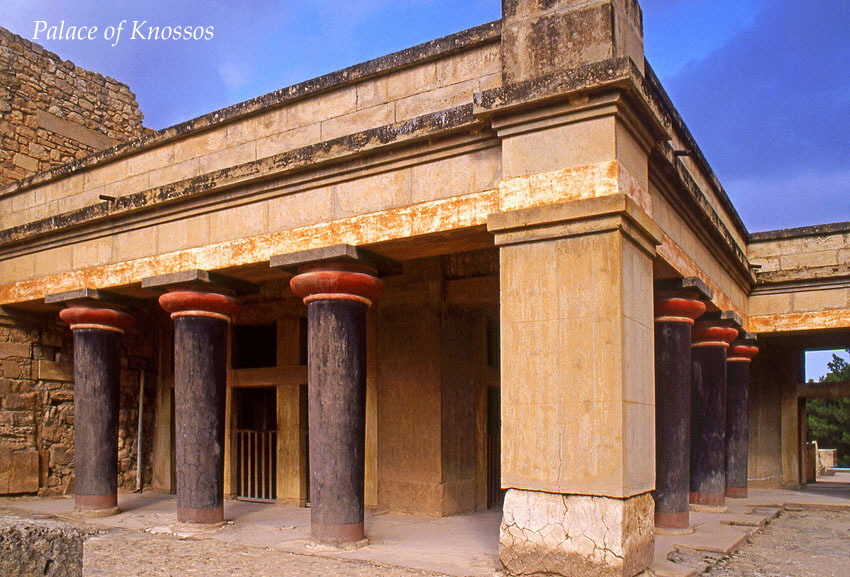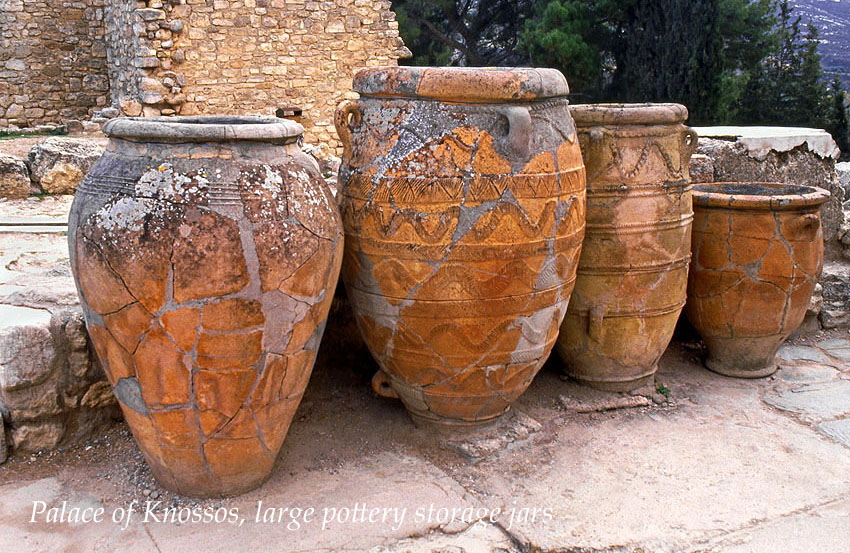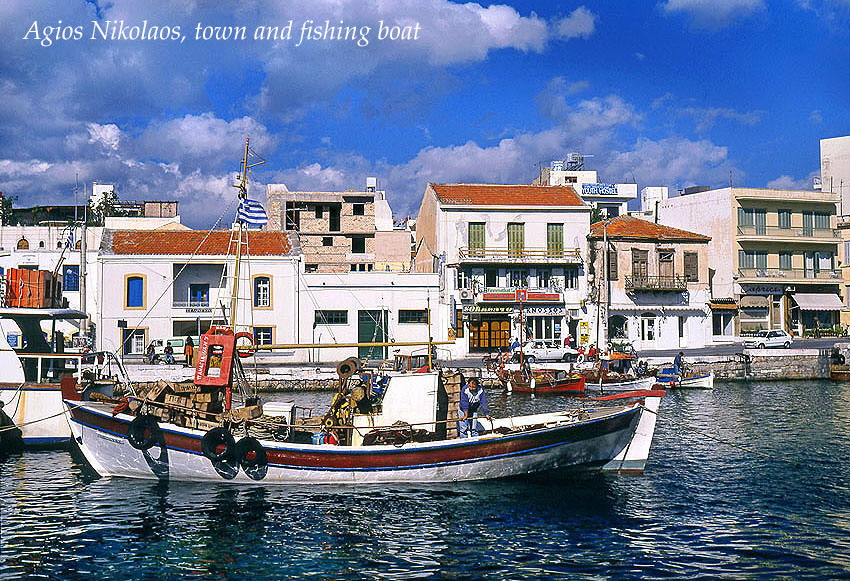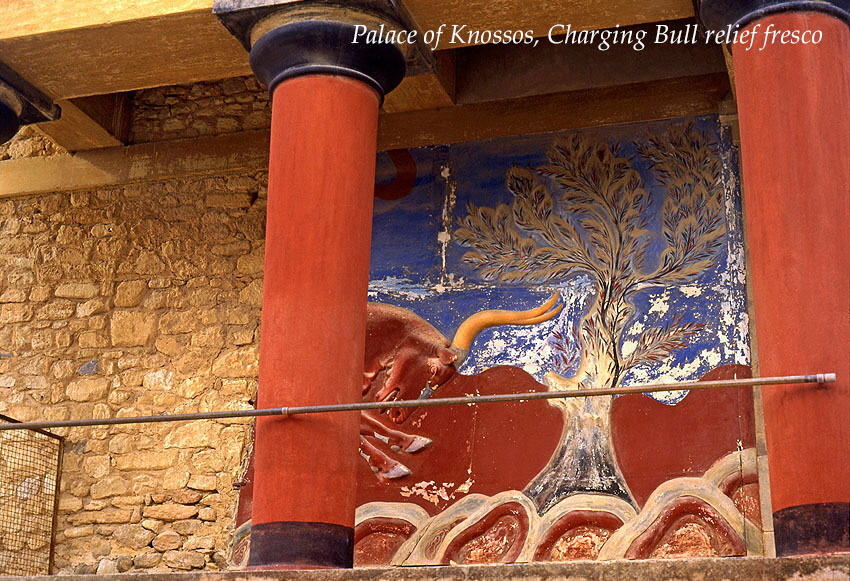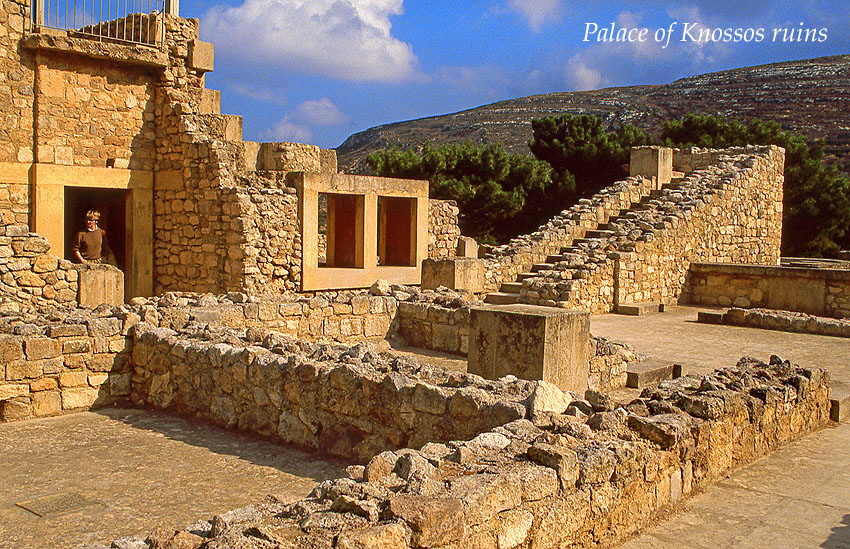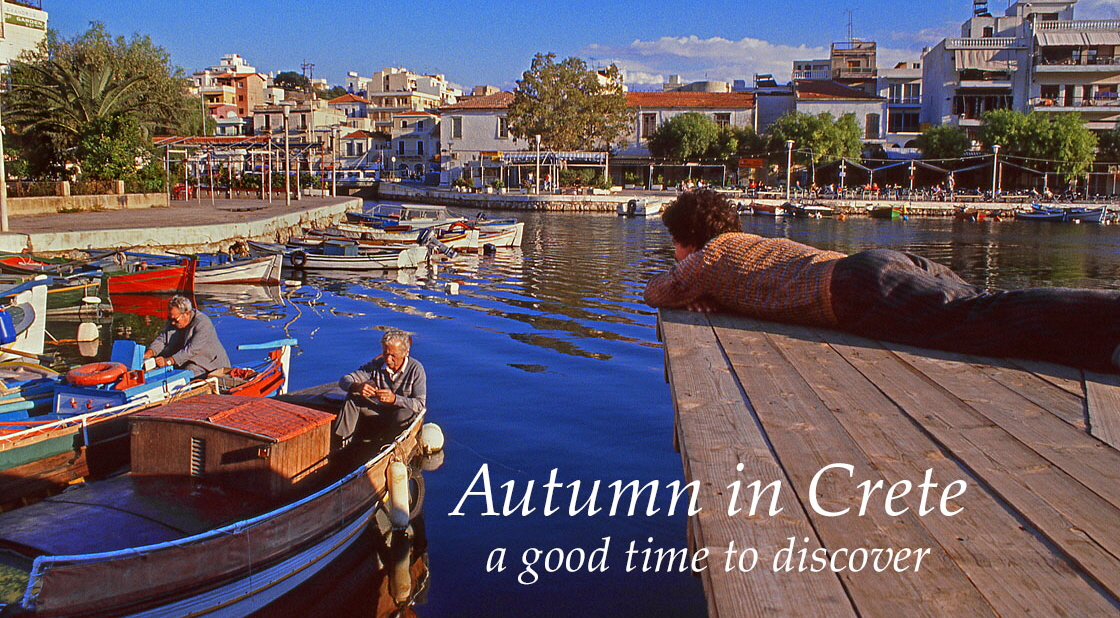
It was mid November. The sun-worshippers had long since gone and hotels which just a few weeks ago were crowded with people, stood shuttered an empty. Agios Nikolaos was once more a fishing port,
no longer merely a resort.
Unless you particularly want a suntan, visiting Crete in autumn has all the advantages and none of the drawbacks of a mid-season holiday. It is neither too hot, nor too cold. You can stroll on the beach without having to step over dozens of prostrate half naked bodies and even the mosquitoes are less bothersome.
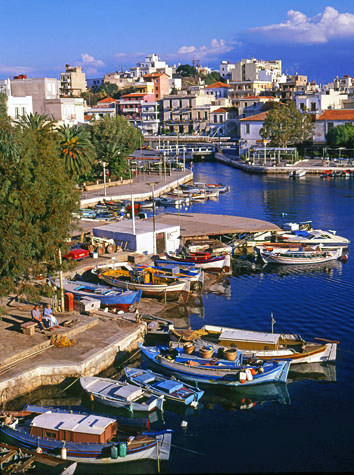
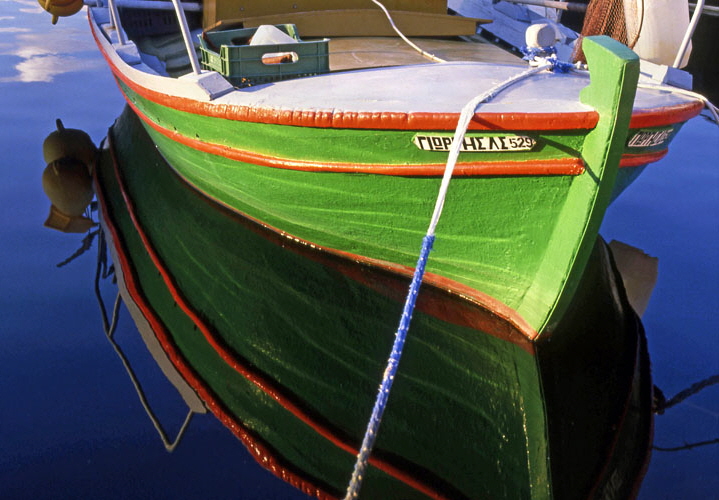
Agios Nikolaos harbour and boats
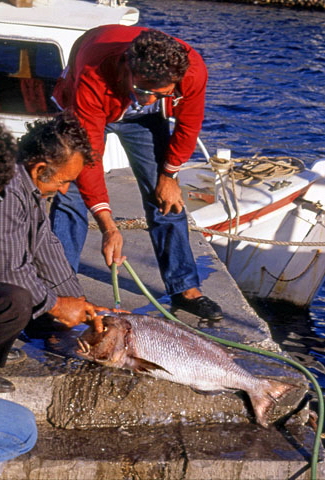
Agios Nikolaos (Ag Nik to its friends), is a pretty little town, perched on the bay of Mirabello on the east coast of the island, and is the main centre from which to explore the eastern side of Crete. Its tiny quay side provides the main focal point, where fishermen, used to working in the public gaze, sort their catch, oblivious to visitors’ stares, camera clicks and mobile phones.
In the tavernas and harbour front restaurants, food is typically Greek Lamb, the island’s staple meat, appears in a number of guises, skewered, grilled, or casseroled with tomatoes and olive oil. Fish and seafood, especially squid and octopus are also available, although prawns and shellfish are less easy to find.
If you’re looking to take back a souvenir or two, Crete has an old tradition of pottery and ceramic ware. Although there’s a lot of mass produced products in towns like Agios, you’ll find small villages selling locally hand made items at reasonable prices.
If you want to feed your mind, as well as your stomach, the town’s museum provides a good introduction to the history of the island, which can be traced back to Neolithic times. Most of the museum’s artefacts, however, relate to Crete’s great classical civilisation, the Minoans, who lived more than 2000 years before the birth of Christ.
Hand made pottery
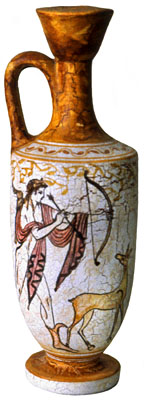
Picturesque Elounda
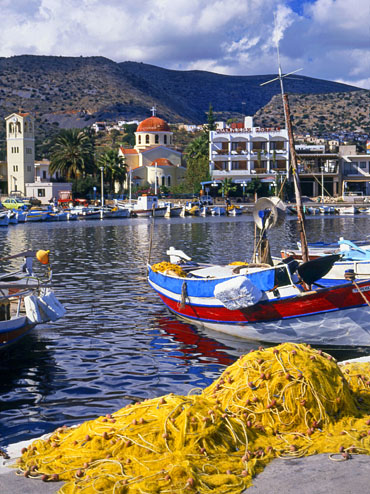
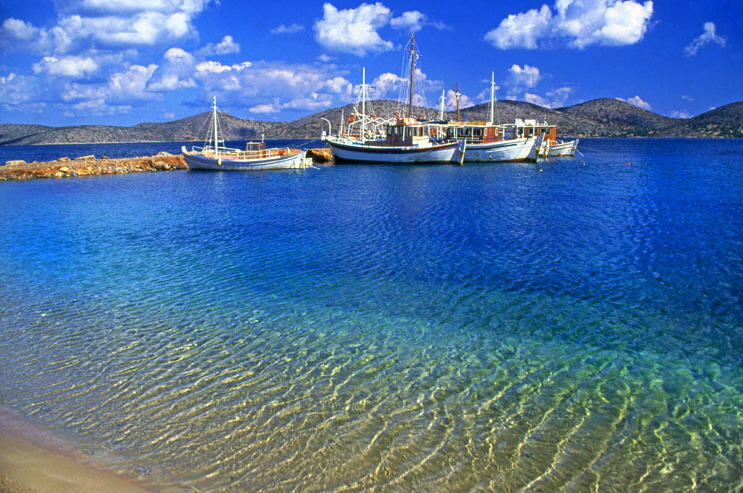
From the bus station in the centre of town there are regular and punctual services to all parts of the island. My first trip was to Elounda, just down the coast from Agios. It has a delightful picture-postcard bay, crowded with colourful fishing boats, complete with romantic sea front church and bell-cum-clock-tower.
Just across the bay from Elounda, the islet of Spinalonga holds the remains of a venetian fort. At one time, the island housed a leper colony. Years ago, the late shipping tycoon Aristotle Onassis planned to turn it into a casino. But despite all such plans, it remains deserted, apart from the regular excursion boats bringing day-trippers from Elounda and Agios.

Panagia Kera church
The village of Kritsa
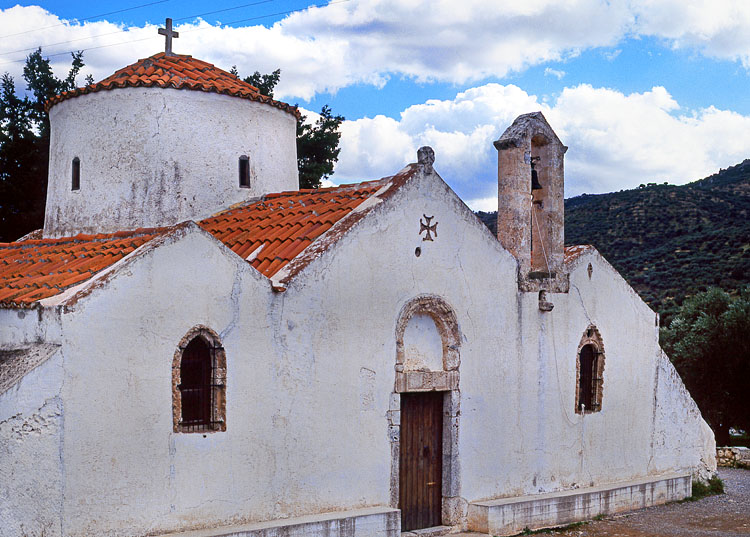
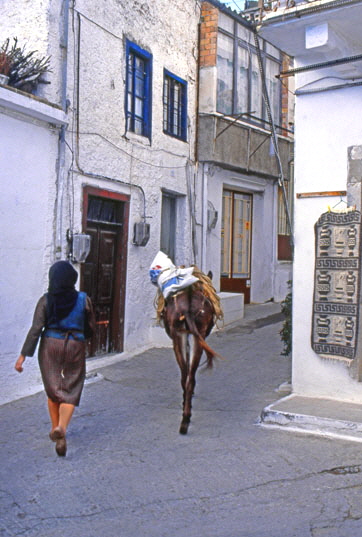
The village of Kritsa
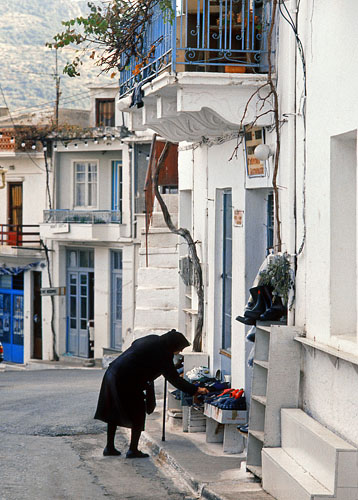
Another short hop from Agios is the island village of Kritsa. Once a simple agricultural community, Kritsa has become affluent on its reputation as a centre for the island’s handmade lace and embroidery. The items on sale are of excellent quality. Despite its prosperity, Kritsa retains much of its original charm. And you will still see women riding back from the fields on donkeys or leading their goats through the village.
Just outside the town, is the lovely Byzantine church of Panagia Kera. Inside, the walls are covered with magnificent sixteenth century frescoes depicting Bible stories. In summer months, the church is one of Kritsa’s main attractions. But in November, when I visited, my guide book’s advice to get there early was unnecessary and I had the church to myself.
Although it is largest of the Greek islands, Crete maintains its rural atmosphere, and villages a mile or so from the most popular coastal resorts remain virtually unspoilt. Leisurely walks around the bay of Mirabello, passing olive groves, sheep grazing and dramatic sea views are also good photo opportunities. To explore rural Crete at its best, Lasithi Plateau is the place to go. Known as the ‘valley of windmills’, this vast, fertile plane is surrounded by tiny isolated villages. The mountains are craggy and barren save for olive, carob shrubs and cypress trees.
In contrast, the valley below is lush and green, abundant in potatoes, and walnut and apple trees heavy with fruit. On the chilly and misty morning that I was there, the harvest was well under way. And with the windmill sails taken down for the winter, the plain took on a eerie, almost mystical appearance.
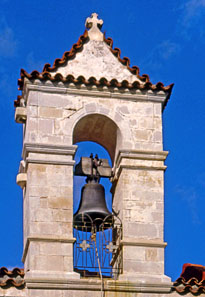
Autumn scenery
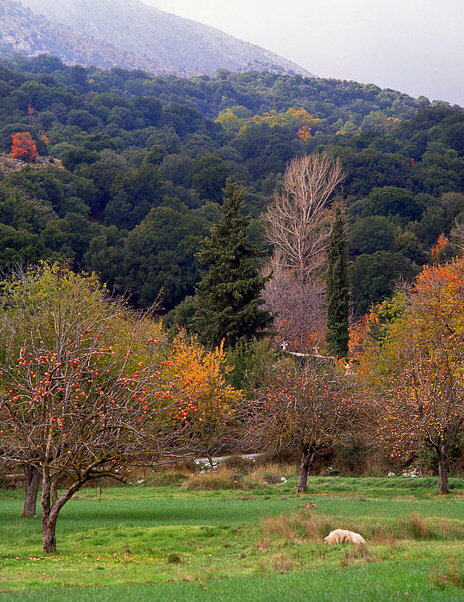
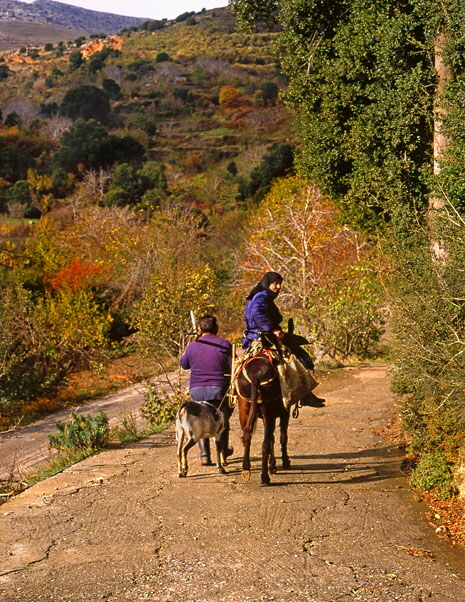
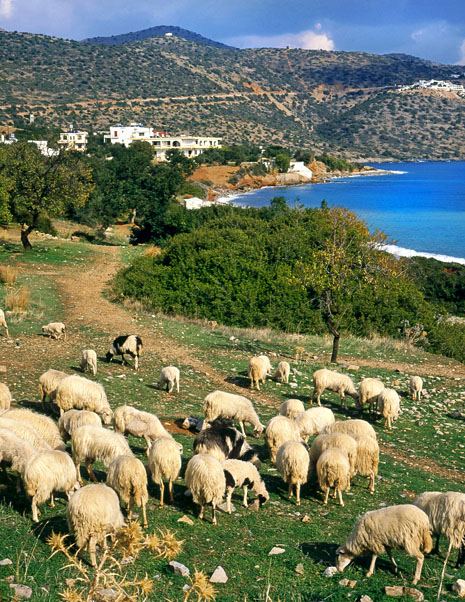
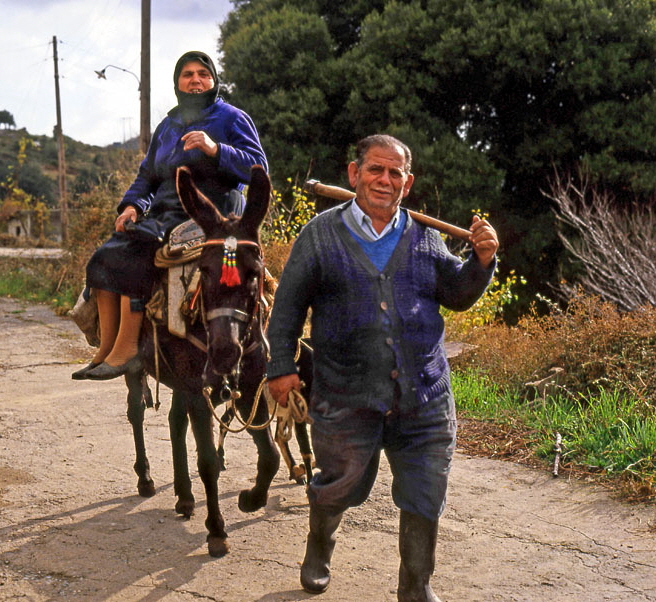
Mythological figures on storage jars
Iraklion Museum exhibits
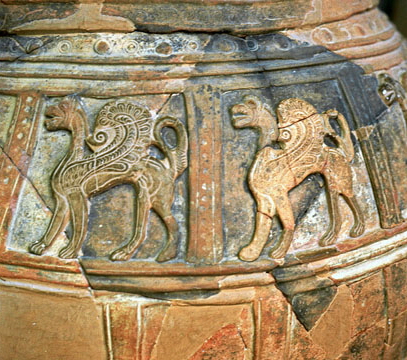
Leaving the mountains, I headed back towards the east coast and Crete’s biggest town, the capital city of Iraklion. Despite the remains of a Venetian fort, Iraklion is like most other capital cities - big, busy and unremarkable. The only thing really worth seeing is the archaeological museum which contains many of the original artefacts from Crete’s best known historic site, the Palace of Knossos, which dates back to the Minoan period.
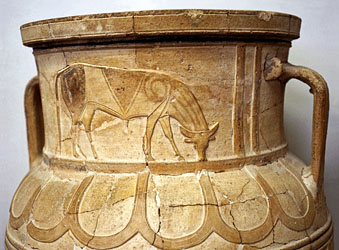
Original frescoes from the Palace of Knossos

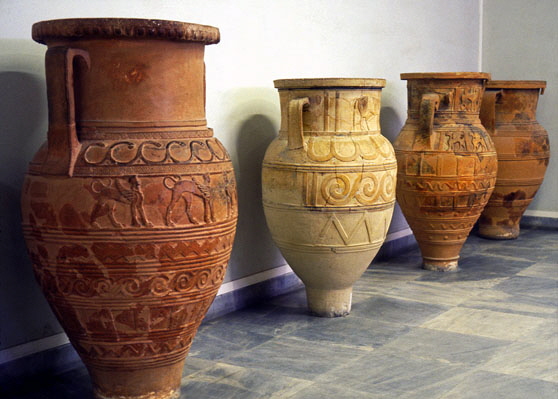
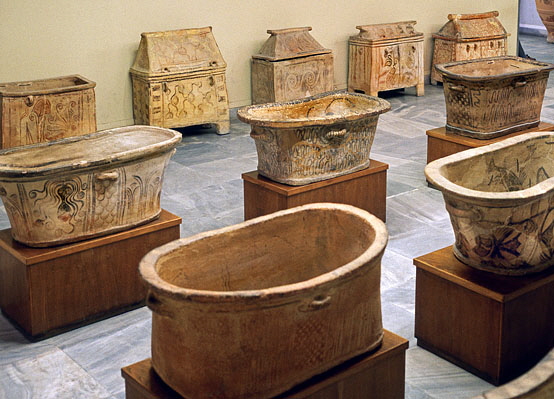
Large storage jars
Minoan period coffins
Knossos is three miles outside Iraklion and the site covers a vast area. In ancient times it was known as The Labyrinth. The site has been extensively excavated and was partially rebuilt by the British archaeologist Sir Arthur Evans early 20th century.
At least two hours is needed to explore it properly, and the elegant wall frescoes are well preserved, and a sight to behold. Having a guide point out the important sights and stories behind the lovely frescoes, will undoubtedly enrich the experience. And of course, late season is perhaps the best time to visit.
Back in Agios Nikolaos, more visitors prepare to leave, as the locals begin to outnumber the tourists, for a few months at least.
Dolphins fresco
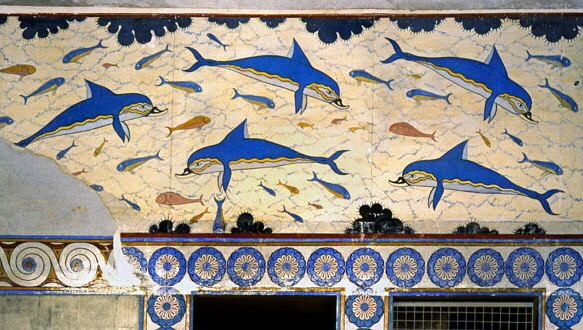
Palace of Knossos
Famous ‘Ladies in Blue’ fresco
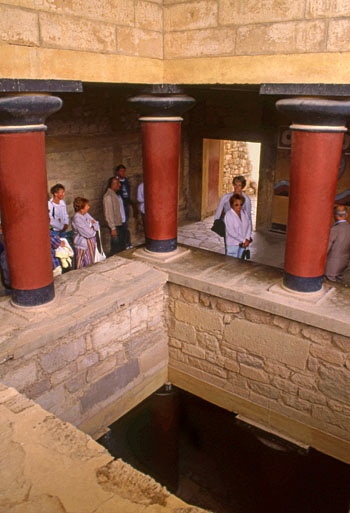
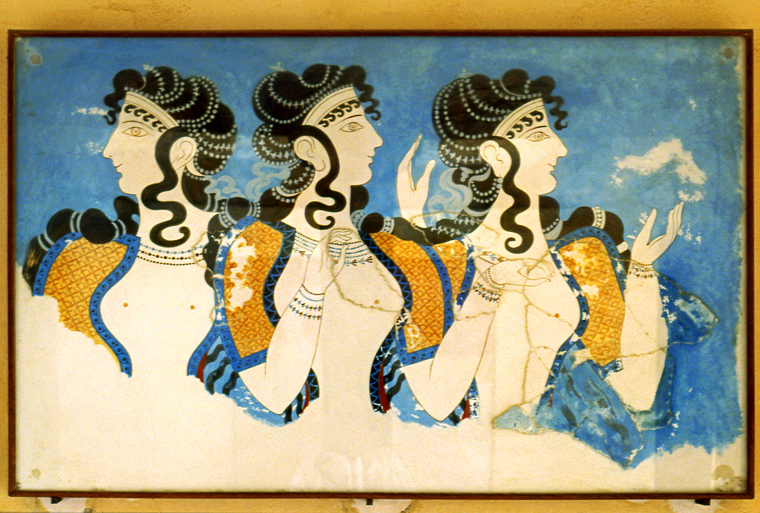
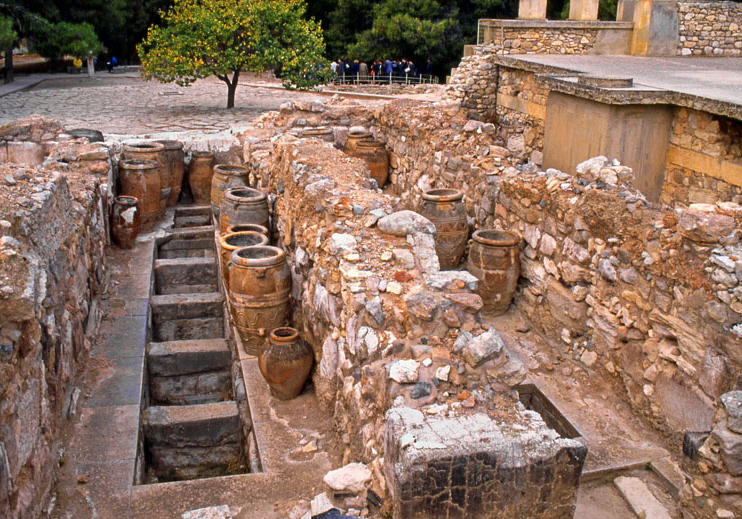
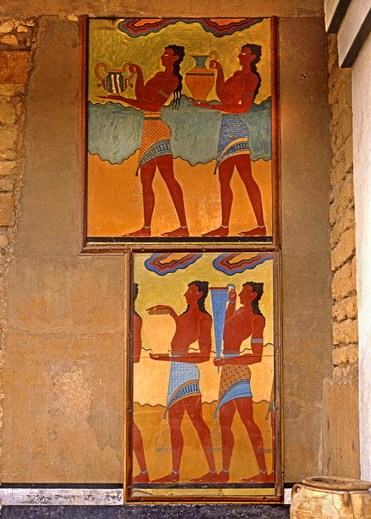
Excavations- large pithoi (clay jars)
Cup Bearers’ fresco
25 images here ©JAYTRAVELPHOTOS
© COPYRIGHT notice. The images on this site are for viewing only.
To purchase any, for personal or commercial use, please contact us at jaytravelphotos@aol.com
